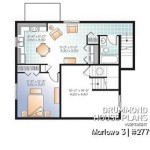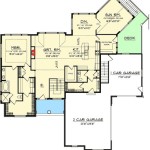How To Design Basement Layout
Finishing a basement is a great way to add extra living space to your home. But before you start framing walls and hanging drywall, you need to design a layout that meets your needs.
Here are seven essential aspects to consider when designing a basement layout:
1. Purpose of the Space
What do you want to use your basement for? A family room? A home office? A gym? A guest suite? Once you know the purpose of the space, you can start to design a layout that will accommodate your needs.
2. Size and Shape of the Space
The size and shape of your basement will dictate the type of layout you can create. If you have a large, open basement, you have more flexibility in terms of design. If your basement is smaller or has an odd shape, you may need to be more creative with your layout.
3. Location of Windows and Doors
The location of windows and doors will affect the amount of natural light and ventilation in your basement. If you want a bright and airy basement, you should try to place your windows and doors on the south side of the house.
4. Ceiling Height
The ceiling height in your basement will also affect the overall feel of the space. If you have a low ceiling, you may want to consider using lighter colors and furniture to make the space feel more open. If you have a high ceiling, you can use darker colors and heavier furniture to create a more dramatic effect.
5. Electrical and Plumbing
The location of electrical outlets and plumbing fixtures will also need to be considered when designing your basement layout. You should make sure that there are enough outlets and fixtures to meet your needs, and that they are placed in convenient locations.
6. Storage
Basements are often used for storage, so it's important to include adequate storage space in your design. You may want to consider adding shelves, cabinets, or even a closet to your basement.
7. Safety
Finally, you should also consider safety when designing your basement layout. Make sure that there are no tripping hazards, and that all stairs and railings are up to code. You should also install a smoke detector and carbon monoxide detector in your basement.

How To Plan For A Finished Basement Chiefblog

Basement Floor Plans Types Examples Considerations Cedreo

7 Best Basement Design Software Platforms For 2024 Cedreo

How To Create A Great Living Space For Finished Basement Layout

Basement Floor Plans How To Make A Good Plan For House Layout

Basement Floor Plan

Basement Design Drv Basements

Basement Finishing Plans Layout Design Ideas Diy

Basement Floor Plans

The Basement Floor Plan Making It Lovely








